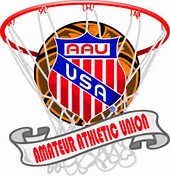I waited a couple of days to write this article to give the results from the NBA’s annual draft time to sink-in. Despite the annual bombardment of pre-draft media hype, the long-term results from this year’s 2017 NBA draft will probably be similar to other basketball drafts held over the past 10 or more years.
Why all the pessimism? It is because that, five to ten years from now, the majority of this year’s crop of superbly-promoted athletes selected in the first round of the NBA draft will end-up on the bench of another team or out of the league (where they, hopefully, will have saved enough for their life after basketball).
Here’s an analogy. In looking back at your own high school graduation class, how have the best thirty academic students measured-up to their hype after leaving high school? Though a few of the top boys or girls probably went on to become successful doctors, lawyers, and such, it is likely that many of the others haven’t performed as well as you may have expected down the road.
Why? It’s hard to predict whether these same young people will apply the needed combination of determination, hard work, and good choices as they move into adulthood.
This brings us to the annual NBA draft. This season, a record 11 of the first 14 players selected in the first round of the 2017 draft were basically college freshmen. Thanks to the NBA’s unique (and incredibly dumb) one-and-done rule, many NBA teams (mostly the ones with historically losing records) feel compelled to make selections based on players with a very limited body of work after only one year at the college level.
Why? Because you don’t want to let another team select the next LeBron James or Kyrie Irving, do you? So the worst teams from the prior season annually arrive back at the draft table and place their first round lottery chips trying to guess whether they should select an athletically gifted freshman “diaper dandy” or go with a more seasoned college or international player.
In the 2017 NBA draft on Thursday night, this year’s overall number one choice, Markelle Fultz, didn’t even start on his own high school team until his junior year. After just one season playing for the University of Washington, Fultz apparently has morphed into the best player in the country in just three years! Isn’t it amazing how things can change in just a few years?
Because of the lack of playing time that many of these future players will accrue in college, NBA scouts are now spending more time attending youth-level AAU games these days. Did you know that the Amateur Athletic Union now has “National Championships” for basketball players from ages 8 through 19? Seriously. I had no idea that this quiet but growing parallel universe of hoops development was so deeply rooted – even for your third-grader, too!
Why? For the money, of course! There must be sufficient money made by coaches, trainers, and others by organizing these teams of dedicated wannabe NBA players to keep it growing. So, who pays for it? In some cases, the doting parents, of course. But so do a growing number of sports shoes and equipment makers, sports-drink companies, and the even insurance companies as they try to create more brand awareness and market share by focusing promotional dollars on this segment, too.
Why? For the money, of course! These same AAU-bred NBA draft choices (most of this year’s top-tier players already knew each other from various AAU “national” squads) are then held-up as models to other wanna-be kids and their parents to regenerate the process. The pitch goes, “See, THIS is what your son or daughter can achieve if he/she is willing to give-up their time (while you give up your money/vacation time, etc.) for the next “x” years by encouraging your son/daughter to improve by competing against the best players”!
Hence, this year’s NBA draft featured a record number of diaper-dandy phenoms. And, like your high school graduation class, some of these young people will keep working hard to improve their weaknesses, listen to their coaches, and make solid choices on and off the court to have a long and prosperous NBA career. However, based on the odds against their long-term NBA success, I think the graduating class from The University of AAU should be required to take and pass a course in personal finance so that these well-groomed hoopsters can make solid financial investments based on their first (and perhaps final) multi-million dollar contract.

